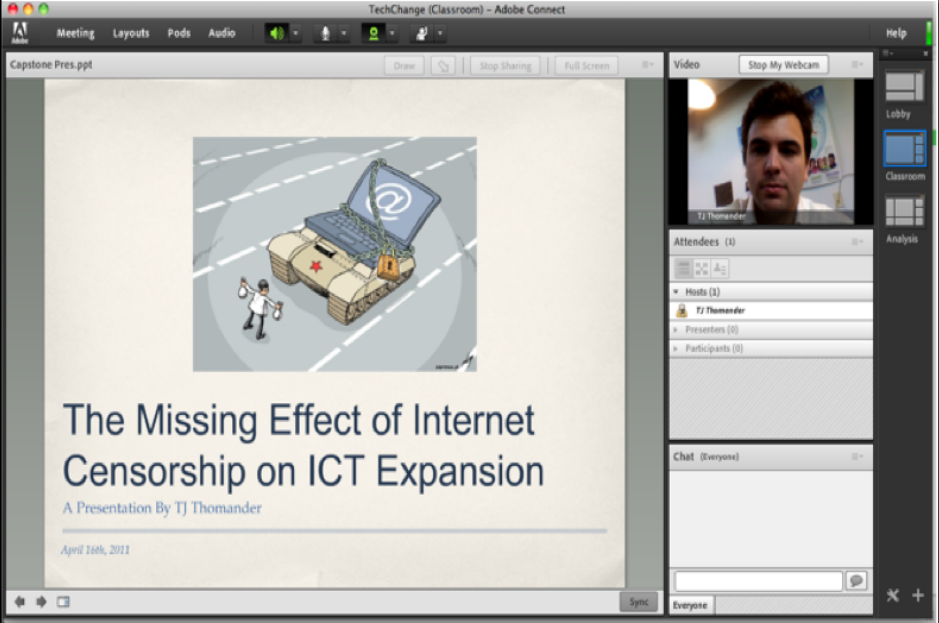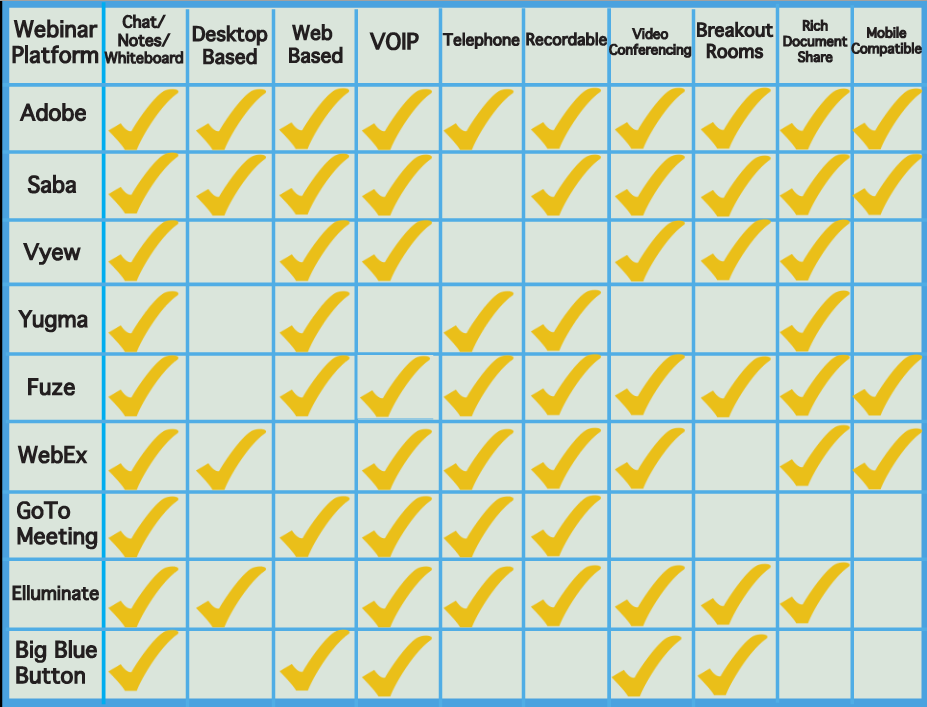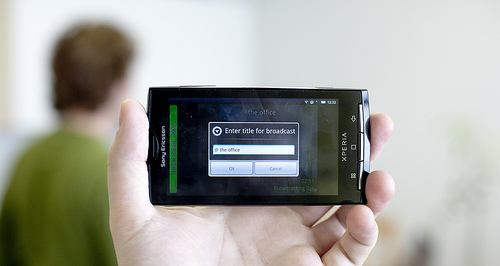We’re excited to start our online course on TC103: Tech Tools and Skills for Emergency Management. We have an incredible group of participants enrolled in the course: 46 people working in 26 countries from organizations like Mercy Corps, UNDP, Voice of America, Concern.net, German International Cooperation, Inter-American Development Bank, African Union Commission, World Pulse Media, SpanAfrica, World Vision, Plan International and more. From professors to practitioners, policy makers to first responders, you all represent an amazing cross-section of people on the front lines of emergency management. We will also have 6 small group moderators and three guest experts supporting our learning for the course including Patrick Meier of Ushahdi and Laura Hudson Walker of FrontlineSMS.
Category: Blog
 I had the opportunity last fall to ghost write the background paper for the U.S. Institute of Peace’s Study Guide on “The Impact of New Media on Peacebuilding and Conflict Management.” This will be used for USIP’s annual high school essay contest and can be downloaded at: http://www.usip.org/programs/initiatives/national-peace-essay-contest
I had the opportunity last fall to ghost write the background paper for the U.S. Institute of Peace’s Study Guide on “The Impact of New Media on Peacebuilding and Conflict Management.” This will be used for USIP’s annual high school essay contest and can be downloaded at: http://www.usip.org/programs/initiatives/national-peace-essay-contest
Mobile phones remain vital for reaching the masses in the Middle East (as discussed in a previous post), but what’s less clear is what to do once you have them on the line. As mobile penetration rates continue to climb, the next challenge will be training and organizing networks to crowdsource shared problems. On Sunday, August 21, TechChange and Souktel held a training in Ramallah to explore how applying tools for mass SMS and crowdmapping could play a role in community organizing and crisis response. The training consisted of three modules: 1) Simulation of directing ambulances through checkpoints after a major attack; 2) Creating a new Ushahidi map and thinking strategically about its application; and 3) Registration for the Standby Task Force. (more…)
Cross-posted from the USAID GBI blog.
Google’s Sub-Saharan Africa office is funding a project by Steve Song to create a comprehensive map of all terrestrial broadband fibre-optic cables in Africa. Using crowdsourcing methods and contacts within the ICT4D space, Song is spearheading an effort to convince governments and telecoms that it is in their own interests to make public where they have laid terrestrial broadband cables. The project is named AfTerFibre (Africa’s Terrestrial Fibres).
AfTerFibre, which started in June, is currently building its network of contacts, engaging governments and telecoms in conversation regarding the location of their cables. In an effort to be as public and open as possible, Song has organized a public google group to collect the information. As the group makes agreements and collects data, they will incrementally publish an updated map of Africa’s terrestrial cables, hopefully one about every two months. Then, next summer, they hope to publish the completed map.
This blog post was updated as of November 2014 to reflect the advances of each web conferencing platform since the original blog post was published by TJ Thomander.
Have you ever been in a classroom and had the teacher ask, “If you can hear me please click on the smiley face?” If so, you have experienced education 2.0—impersonal yet far-reaching and convenient. There are several web conferencing platforms that allow organizations flexibility in the way they learn and collaborate, and there are many options available. We want to break down the top nine that we feel are the most competitive in the space right now. We’ve updated this post to describe how these web conferencing platforms have evolved over the last few years since we first published this post in 2011, both in terms of functionality and pricing.
Web conferencing has a plethora of uses, whether for teaching or tutoring, collaborating on projects in real time, or holding a webinar that allows participants to interact with each other. The basic features that you can expect from a web conferencing platform are the ability to upload and display a presentations, documents, or other media; a chat function; and a white board.
At the time of the original blog post, Google+ Hangouts didn’t quite offer these features, but through apps like “Screen Share” and “Scoot and Doodle”, it has become a flexible option for creating and broadcasting online lessons, webinars, and events, or for collaborating with co-workers and classmates. Although a Google+ Hangout is limited to 10 users at a time, anyone can broadcast and record a Hangout using Hangouts on Air. Hangouts on Air enables users to share broadcasts with a wider audience, and allows the audience to watch live and participate by commenting, or to view a recording of the broadcast at any time. With these advantages, we decided to go with embedding Google Hangouts on Air for our own live events on our course platform.
Beyond the features offered by Google+ Hangouts, other additions such as mobile compatibility, real-time polling, and breakout rooms are platform-specific. Here’s an updated look at who offers what:
Professional Suites
Premium web conferencing platforms are delivered by Adobe Connect, Saba, and Cisco WebEx. These platforms are browser-based, and participants are able to connect through VoIP on all three. Additionally, these platforms are generally able to host greater amounts of attendees, and their features are highly customizable, whether an organization seeks to focus on collaboration or learning. This customized functionality comes at a premium, and most often the agreement is negotiated based on the needs of the client. If you work in the ICT4D field, the most important factor to consider among web conferencing platforms is the level of bandwidth necessary to run- and these top-level options won’t be ideal.
The ideal option for an organization among the three premium platforms depends on an organization’s priorities. Saba is built to create a rich online learning experience geared toward professional training and development. Since 2011, Saba has adapted its model by creating apps that are specialized for certain HR functions in the workplace. In the realm of online learning, Saba offers “Learning@Work” for organizations to build capacity among employees through online learning options that integrate virtual classrooms, collaborative goal-setting and tracking, and course selections tailored to the interests and goals of employees. Adobe Connect and Cisco WebEx can serve an organization’s web meeting needs, but also offer the option to extend their services to include webinar and event management, as well as features that encourage social learning.
For these 3 platforms, an organization is able to purchase various levels of participant limits and customize platform features based on its needs.
-
Cisco WebEx Meetings– $69/mo for 100 participants with annual commitment
-
Adobe Connect – Price Negotiated
-
Saba Learning@Work – Price Negotiated
Mid-Level Suites
These web conferencing clients are in a battle royale for low prices, simple aesthetic, and competitive functionality. We’ll be focusing on Fuze Meeting, Vyew, Yugma, GoToWebinar, and Blackboard Collaborate. I want to first discuss my favorite of the bunch—Fuze Meeting, as it offers just about everything that the premium platforms offer. It allows multiple call–in options, video conferencing, the ability to record and download webinars, mobile device integration, and breakout rooms. GoToWebinar and Yugma both offer similar features at a higher price point, but do not include breakout rooms. Vyew is ideal for web conferencing among a smaller number of participants, and is available at varying price points for a maximum of 15 simultaneous participants. For 5 participants, it offers video conferencing (but not much else) for a mere $9.95/month.
-
Fuze Premium– $40/mo for 250 participants with annual commitment
-
Yugma – $79.95/mo for 100 participants
-
Vyew – $9.95/mo for 5 participants
-
GoToWebinar – $79/mo for 100 participants
-
Blackboard Collaborate – Price Negotiated
Open-Source Suite
Big Blue Button is an open-source platform geared towards educational institutions. It can be modified to fit the needs of the client, but would require a knowledgeable IT team to do it. It offers the ability to present via video and conference with students, annotate presentations, and has been updated to include the ability to record sessions and view them at any time. It still lacks mobile integration, but continues to be updated, and is highly recommended for organizations that have a good handle on tech and want a cost-effective and easy-to-use option.
-
Big Blue Button – $0 for Unlimited Participants
Final Thoughts
We have heard nothing but good things about Fuze Meeting, and even recommended that one of our clients make a switch from Elluminate. Fuze Meeting better suited their needs for organizational conferencing. Their international staff members are now able to call in via Skype, a separate VoIP number, or via telephone, and this flexibility is important if firewalls block certain types of online communication. Additionally, Fuze’s mobile device add-ons have helped their employees communicate on-the-go.
We are excited to see how further innovations in online learning can continue to improve student learning outcomes and give people everywhere the ability to collaborate on solutions to complex challenges across the globe. Have you used any of these web conferencing platforms? If so, what you what did you think about the experience? Are there any new and exciting platforms that we missed?
Interested in how TechChange integrates web conferencing in our online trainings? Join our online courses on technology for social change here.
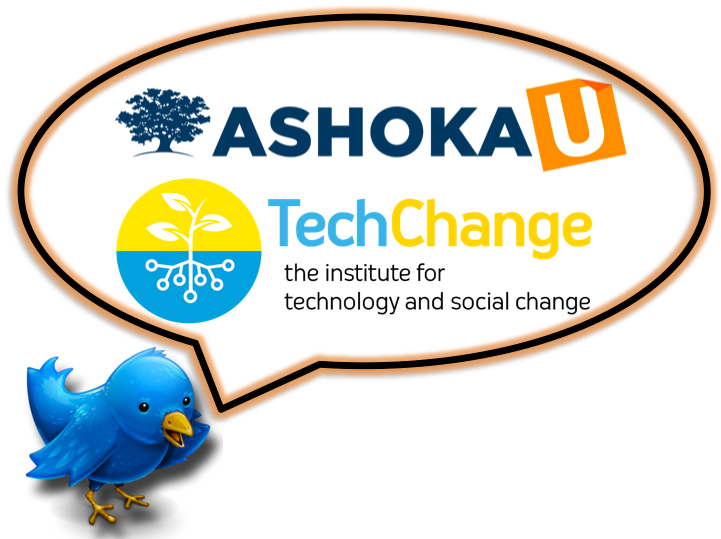 Last Friday, 81 Tweeters joined for one hour to discuss the current landscape and future of technology and social entrepreneurship in higher education. In the Twitter Chat, hosted by TechChange and AshokaU, 410 tweets were sent and 50 URLs were shared that informed of some of the most innovative and relevant advances in the space. You can view all the statistics here at summarizr.
Last Friday, 81 Tweeters joined for one hour to discuss the current landscape and future of technology and social entrepreneurship in higher education. In the Twitter Chat, hosted by TechChange and AshokaU, 410 tweets were sent and 50 URLs were shared that informed of some of the most innovative and relevant advances in the space. You can view all the statistics here at summarizr.
First we asked for specific examples of social entrepreneurial tech ventures. We got some interesting replies and learned about a lot of great work that people are doing. Here’s the list of people, organizations, and businesses that were mentioned. (more…)
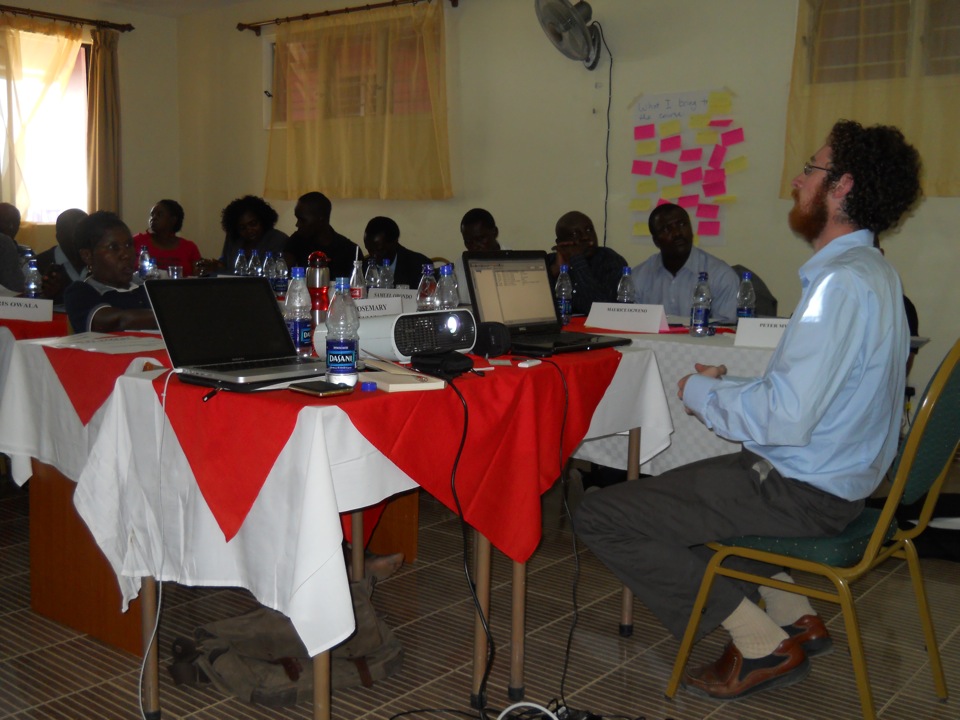 TechChange was recently brought to Kenya by the Partnership for Peace , a program run by the Konrad Adenauer Foundation, to train local leaders from Kenya’s Nyanza, Rift Valley, and Western provinces in the use of FrontlineSMS and Ushahidi software. These leaders were drawn from Community Service Organizations (CSOs), which are responsible for supporting everything from local agriculture, public health, election monitoring and conflict resolution efforts.
TechChange was recently brought to Kenya by the Partnership for Peace , a program run by the Konrad Adenauer Foundation, to train local leaders from Kenya’s Nyanza, Rift Valley, and Western provinces in the use of FrontlineSMS and Ushahidi software. These leaders were drawn from Community Service Organizations (CSOs), which are responsible for supporting everything from local agriculture, public health, election monitoring and conflict resolution efforts.
Our training program focused on the use of FrontlineSMS and Ushahidi as tools for monitoring elections, since the CSOs will play an important role in supporting the next round of national elections in 2012. Our three-day program started out with some basic discussions of technology, governance, and the role of information communication systems in Kenya. We also introduced the FrontlineSMS software the first day so that participants could see it in action and use it before the simulation on the second day of the course. The simulation, an election monitoring game, allowed participants to go through the entire process of publicizing their data gathering project, collating data sent in by text message, and using the FrontlineSMS and Ushahidi software to disseminate data to “voters” who would use the information to make decisions about where to vote.
In the technological game of cat and mouse, where activists and governments seek to control the flow of information through digital devices, activists have a new card to play: Bambuser.
Information is power. And controlling the flow of information is important to the strategies of those who have power, and those who seek to take it away from them. Different tech tools have been taking center stage at different times – each with it’s own features that make it the right tool for the right at the time. And right now, Bambuser is giving the upper hand to those want to stream video in real time. As described by CEO Hans Eriksson, Bambuser is what you get if “YouTube fell in love with Skype and had a love child.” Compatible with 260 mobile phone models, Bambuser allows users to broadcast live from their mobile device. As footage is taken, Bambuser streams it directly to social network platforms, blogs, and the Bambuser site among others.
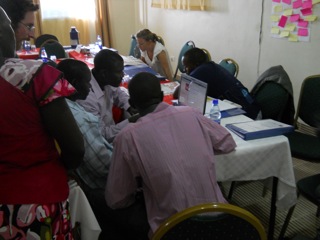 As Jordan and I wrap up our FrontlineSMS/Ushahidi training here in Kisumu, Kenya we picked up a number of valuable observations that can be borne in mind by others as they prepare their own projects using these pieces of software.
As Jordan and I wrap up our FrontlineSMS/Ushahidi training here in Kisumu, Kenya we picked up a number of valuable observations that can be borne in mind by others as they prepare their own projects using these pieces of software.
The first and most important is to plan your “work arounds”. During our preparatory afternoon the first day we arrived, FrontlineSMS worked on my MacBook Pro and Jordan’s Linux machine flawlessly. The first day of the training program, FrontlineSMS completely failed to work on the exact same machines using the exact same GSM modems, and the exact same FrontlineSMS download. This kind of failure could happen at any time, and that time will probably be when you need the software to be at it’s most efficient. We got around this by uploading Frontline onto a few other computers, testing it, and finding that the software seemed happiest running on a more bare-bones Windows-based machine. In an hour we went from having a serious problem to finding a solution that carried us through the next two days without any further complications. In the field, keep a few extra computers handy, be patient as you encounter hiccups, and as one of the participants advised, “approach the challenge knowing you will persevere.”
During the protests in Tahrir square, one Egyptian activist tweeted: “We use Facebook to schedule the protests, Twitter to coordinate, and YouTube to tell the world.” A similar phenomenon is happening with the response to the most recent Mumbai bombings, where Mumbai residents and a concerned online community are collaborating through a variety of online tools to gather information and potentially save lives. According to the Economist blog:
“AT 6:54 pm the first bomb went off at Zaveri Bazaar, a crowded marketplace in South Mumbai. In the next 12 minutes two more followed in different locations in the city. Even before the blasts, torrential rain meant that roads were clogged. The attacks added to the confusion just as millions of people were returning home from work. With telephone lines jammed, many Mumbaikars turned to a familiar alternative: they posted their whereabouts, and sought those of their close ones, on social networks.
(more…)

